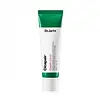What's inside
What's inside
 Key Ingredients
Key Ingredients

 Benefits
Benefits

 Concerns
Concerns

 Ingredients Side-by-side
Ingredients Side-by-side

Water
Skin ConditioningHomosalate
Skin ConditioningEthylhexyl Methoxycinnamate
UV AbsorberPropanediol
SolventEthylhexyl Salicylate
UV AbsorberAlcohol
AntimicrobialOctocrylene
UV AbsorberButyl Methoxydibenzoylmethane
UV AbsorberBenzotriazolyl Dodecyl P-Cresol
UV AbsorberPentylene Glycol
Skin Conditioning1,2-Hexanediol
Skin ConditioningLavandula Angustifolia Oil
MaskingSilica
AbrasiveDimethicone/Vinyl Dimethicone Crosspolymer
Skin ConditioningAmmonium Acryloyldimethyltaurate/Vp Copolymer
Styrene/Acrylates Copolymer
Ethylhexylglycerin
Skin ConditioningHydroxypropyl Methylcellulose Stearoxy Ether
Polyacrylate Crosspolymer-6
Emulsion StabilisingButylene Glycol
HumectantBHT
AntioxidantT-Butyl Alcohol
PerfumingTocopherol
AntioxidantWater, Homosalate, Ethylhexyl Methoxycinnamate, Propanediol, Ethylhexyl Salicylate, Alcohol, Octocrylene, Butyl Methoxydibenzoylmethane, Benzotriazolyl Dodecyl P-Cresol, Pentylene Glycol, 1,2-Hexanediol, Lavandula Angustifolia Oil, Silica, Dimethicone/Vinyl Dimethicone Crosspolymer, Ammonium Acryloyldimethyltaurate/Vp Copolymer, Styrene/Acrylates Copolymer, Ethylhexylglycerin, Hydroxypropyl Methylcellulose Stearoxy Ether, Polyacrylate Crosspolymer-6, Butylene Glycol, BHT, T-Butyl Alcohol, Tocopherol
Water
Skin ConditioningPropanediol
SolventCentella Asiatica Leaf Water
Skin ConditioningButylene Glycol
HumectantCaprylic/Capric Triglyceride
MaskingPanthenol
Skin ConditioningDiisostearyl Malate
EmollientPolyglyceryl-3 Methylglucose Distearate
EmulsifyingButyrospermum Parkii Butter
Skin ConditioningGlyceryl Stearate
EmollientMacadamia Ternifolia Seed Oil
EmollientCetearyl Alcohol
EmollientHydrogenated Poly(C6-14 Olefin)
EmollientHydrogenated Polydecene
EmollientHydrogenated Polyisobutene
Emollient1,2-Hexanediol
Skin ConditioningPEG-8
HumectantPEG-100 Stearate
Polyacrylate-13
Palmitic Acid
EmollientTocopheryl Acetate
AntioxidantBeeswax
Emulsion StabilisingGlycerin
HumectantStearic Acid
CleansingPhenoxyethanol
PreservativePolyisobutene
Asiaticoside
AntioxidantCarbomer
Emulsion StabilisingMadecassic Acid
Skin ConditioningAsiatic Acid
Skin ConditioningSpirulina Platensis Powder
Skin ProtectingAlcohol
AntimicrobialPolysorbate 20
EmulsifyingEthylhexylglycerin
Skin ConditioningLavandula Angustifolia Oil
MaskingSorbitan Isostearate
EmulsifyingAdenosine
Skin ConditioningCeramide AP
Skin ConditioningCitrus Grandis Peel Oil
MaskingHydrogenated Lecithin
EmulsifyingDisodium EDTA
Rosmarinus Officinalis Leaf Oil
MaskingAnthemis Nobilis Flower Oil
MaskingSodium Hyaluronate
HumectantCentella Asiatica Extract
CleansingTheobroma Cacao Extract
Skin ConditioningDextrin
AbsorbentHouttuynia Cordata Extract
Skin ConditioningAniba Rosaeodora Wood Oil
AstringentCentella Asiatica Meristem Cell Culture
AntioxidantMadecassoside
AntioxidantCitric Acid
BufferingAchillea Millefolium Extract
CleansingArtemisia Absinthium Extract
Skin ConditioningArnica Montana Flower Extract
MaskingGentiana Lutea Root Extract
Skin ConditioningSucrose Laurate
EmollientSodium Glycerophosphate
Selaginella Lepidophylla Extract
EmollientPotassium Magnesium Aspartate
BufferingLysolecithin
EmulsifyingMagnesium Gluconate
Skin ConditioningCalcium Gluconate
HumectantPotassium Sorbate
PreservativeSodium Ascorbyl Phosphate
AntioxidantSodium Benzoate
MaskingXanthan Gum
EmulsifyingWater, Propanediol, Centella Asiatica Leaf Water, Butylene Glycol, Caprylic/Capric Triglyceride, Panthenol, Diisostearyl Malate, Polyglyceryl-3 Methylglucose Distearate, Butyrospermum Parkii Butter, Glyceryl Stearate, Macadamia Ternifolia Seed Oil, Cetearyl Alcohol, Hydrogenated Poly(C6-14 Olefin), Hydrogenated Polydecene, Hydrogenated Polyisobutene, 1,2-Hexanediol, PEG-8, PEG-100 Stearate, Polyacrylate-13, Palmitic Acid, Tocopheryl Acetate, Beeswax, Glycerin, Stearic Acid, Phenoxyethanol, Polyisobutene, Asiaticoside, Carbomer, Madecassic Acid, Asiatic Acid, Spirulina Platensis Powder, Alcohol, Polysorbate 20, Ethylhexylglycerin, Lavandula Angustifolia Oil, Sorbitan Isostearate, Adenosine, Ceramide AP, Citrus Grandis Peel Oil, Hydrogenated Lecithin, Disodium EDTA, Rosmarinus Officinalis Leaf Oil, Anthemis Nobilis Flower Oil, Sodium Hyaluronate, Centella Asiatica Extract, Theobroma Cacao Extract, Dextrin, Houttuynia Cordata Extract, Aniba Rosaeodora Wood Oil, Centella Asiatica Meristem Cell Culture, Madecassoside, Citric Acid, Achillea Millefolium Extract, Artemisia Absinthium Extract, Arnica Montana Flower Extract, Gentiana Lutea Root Extract, Sucrose Laurate, Sodium Glycerophosphate, Selaginella Lepidophylla Extract, Potassium Magnesium Aspartate, Lysolecithin, Magnesium Gluconate, Calcium Gluconate, Potassium Sorbate, Sodium Ascorbyl Phosphate, Sodium Benzoate, Xanthan Gum
 Reviews
Reviews

Ingredients Explained
These ingredients are found in both products.
Ingredients higher up in an ingredient list are typically present in a larger amount.
1,2-Hexanediol is a synthetic liquid and another multi-functional powerhouse.
It is a:
- Humectant, drawing moisture into the skin
- Emollient, helping to soften skin
- Solvent, dispersing and stabilizing formulas
- Preservative booster, enhancing the antimicrobial activity of other preservatives
Alcohol comes in many different forms. Different types of alcohol will have different effects on skin. This ingredient is usually an astringent alcohol.
These alcohols are drying on the skin. They may strip away your skin's natural oils and even damage your skin barrier. Astringent alcohols may also irritate skin.
Other types of astringent alcohols include:
According to the National Rosacea Society based in the US, you should be mindful of products with these alcohols in the top half of ingredients.
Any type of sanitizing product will have high amounts of alcohol to help kill bacteria and viruses.
Fatty alcohols come from plant oils such as coconut oil. These can help hydrate the skin and are non-irritating. Some fatty alcohols include cetyl and stearyl alcohol.
Learn more about AlcoholButylene Glycol (or BG) is used within cosmetic products for a few different reasons:
Overall, Butylene Glycol is a safe and well-rounded ingredient that works well with other ingredients.
Though this ingredient works well with most skin types, some people with sensitive skin may experience a reaction such as allergic rashes, closed comedones, or itchiness.
Learn more about Butylene GlycolEthylhexylglycerin (we can't pronounce this either) is commonly used as a preservative and skin softener. It is derived from glyceryl.
You might see Ethylhexylglycerin often paired with other preservatives such as phenoxyethanol. Ethylhexylglycerin has been found to increase the effectiveness of these other preservatives.
Lavandula Angustifolia Oil is more commonly known as lavender essential oil. It is considered a fragrancing ingredient.
Lavender imparts a famous scent. While the smell is lovely, this ingredient and may sensitize skin in topical products. This is because about 85% of the oil is made up of linalool and linalyl acetate.
When exposed to air, these two compounds become strong allergens. This ingredient exhibits cytotoxicity at low concentrations; amounts of 0.25% have been shown to damage skin cells.
A study from Japan found this ingredient caused lavender sensitivity after widespread exposure.
Lavender essential oil has some antimicrobial, antibacterial, and anti-inflammatory properties. However, the cons of this ingredient may outweight the pros.
More research is needed to confirm lavender essential oil's effects when used in aromatherapy.
Lavandula Angustifolia is known as the English Lavender and famous for creating purple fields in Provence, France.
Learn more about Lavandula Angustifolia OilPropanediol is an all-star ingredient. It softens, hydrates, and smooths the skin.
It’s often used to:
Propanediol is not likely to cause sensitivity and considered safe to use. It is derived from corn or petroleum with a clear color and no scent.
Learn more about PropanediolWater. It's the most common cosmetic ingredient of all. You'll usually see it at the top of ingredient lists, meaning that it makes up the largest part of the product.
So why is it so popular? Water most often acts as a solvent - this means that it helps dissolve other ingredients into the formulation.
You'll also recognize water as that liquid we all need to stay alive. If you see this, drink a glass of water. Stay hydrated!
Learn more about Water